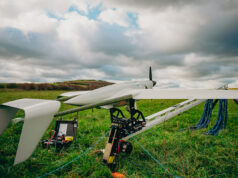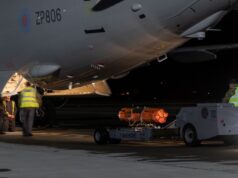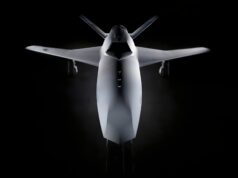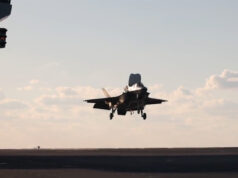When people describe the UK’s role in the F-35 fighter programme, they often invoke its early status as a “level one” partner, once a badge of influence at the heart of the world’s most advanced combat aircraft project.
Yet, as evidence to the House of Lords International Relations and Defence Committee showed last week, that position has changed.
Dr Sophy Antrobus of King’s College London told peers that the UK’s “level one partnership was for the systems development and demonstration part of the programme”, which no longer exists. “We are now equal partners in the production and in-service phases,” she said.
Even so, Britain’s early investment still carries weight. “Although we do not have that status anymore, it still contributes to our standing,” she noted, adding that 15 percent of every F-35 is built in the UK. Something heavily disputed.
That foundation remains valuable, but the country’s leverage has slipped as other partners have expanded their orders. Dr Justin Bronk of the Royal United Services Institute explained that “the tier one partner status was during the development process… at the time, we were buying by far the largest number of aircraft.” Britain once planned to buy 138 jets; it has ordered 48, with roughly 40 now in service.
Meanwhile, other countries have moved ahead. “Italy, Japan, Norway and the Netherlands all operate more jets than we do,” Bronk said. “Our participation in many practical areas has fallen significantly short of where our initial commitments were.” The result, he argued, is a polite but unmistakable awareness in Washington that London’s influence no longer matches its rhetoric.
The UK still holds a privileged position in some of the F-35’s most sensitive areas. Through the Australia Canada United Kingdom Reprogramming Laboratory, it can modify mission data and electronic warfare files, capabilities not granted to most other partners. Yet even that advantage is being eroded.
“Australia is increasingly competing with the UK for the most preferred partner spot,” Bronk observed. “It has more aircraft, flies them nearly twice as much, and is a constant presence in the Indo-Pacific.”
Britain remains a core ally, but its standing within the F-35 enterprise has evolved from prime mover to trusted contributor. The UK’s technical footprint endures, but its political and operational influence has thinned.














If Justin Bronk said it, it must be true. What’s the difference? Do we get some sort of prize for bringing Tier 1, maybe Lockheed will gives us a badge.
These are academic “experts” speaking to the House of Lords.
They have as much relevance as Reddit.
They still have more relevance than many of the ‘experts’ on here.
This is obviously a direct result of the paucity of UK orders of the aircraft-We still talk the talk but no longer walk the walk.
Don’t try and obfuscate with the old Tempest trope, as both Japan & Italy are involved in that project and have ordered more F35 jets than us.
We can always droll on the promise of Tempest Jam tomorrow I suppose.
Our rollout , and future projection of provision of the F35B is quite disheartening to be honest , and as for what difference it will make , lets see what happens with the AUKUS submarine project and how Australia fares in that- I think geopolitically we may be in for somewhat of a rude awakening.
I have to agree with you.
They will have been briefed and understand a lot more….
As for F35 it is pretty clear RAF went cold on it….as they don’t gave the budgets to run them hard as they are even more expensive than Typhoon per flying hour.
The 2002 decision to buy the F-35B rather than the F-35C was decisively influenced by the RAF’s requirement for a STOVL successor to the Harrier. The UK’s official requirement at that time was for 150 a/c (60 for the RN, 90 for the RAF). The planned 2012 IOC was based on reaching two frontline squadrons of 12 a/c each – so probably 40-50 aircraft delivered, with the rest to follow by 2018(!). At that date the RN still had a requirement for three front-line FAA squadrons of 12 a/c each (down from the four squadrons that had been approved in 1998), whilst the RAF wanted to re-equip four frontline Harrier squadrons and a large OCU. Come 2025 and we are instead aspiring to reach a final total of three frontline squadrons (drawing from a shared pool of a/c) by the early 2030’s, plus an OCU that in emergencies will have am operational nuclear role! With GCAP now devouring funding, the chances of the UK ever buying more than 75 F-35s (63 B’s and 12 A’s) seems minimal. And note that the oldest three UK F-35B’s have ceased to have any utility as they are way too out of date and can’t be upgraded, and at least another four are probably now only useful for training.
Caveat – before anyone tells me, I know that the JSF programme suffered from many delays which would have impacted UK, even if the money had been available.
I think you have pointed at the problems between what we were and what we are now in this programme, things have changed so much that simply sticking to original plans much of it (ie the B version) was integral to us being Tier 1 in the first place. Going in the wrong direction now just to retain a badge that as time has passed likely never really reflected realities longer term anyway and certainly doesn’t suit our true needs moving ahead and finances involved, would be a serious mistake. We have to face two things and project delays have only worsened them.
FIRSTLY the aircraft has never become the dominant technological solution it was promoted as ie the cheaper stealth all round killer platform to the unsustainable horrendously expensive and specialist ‘first gen’ stealth F-22 platform. To a degree, time has overtaken its designed-in capabilities, as sensors and defensive missiles have eaten into its ability to carry out its originally conceived missions, in terms of range, aerodynamic inefficiency and load capacity as comprehensively as once expected, even if it may be the only present platform admittedly that can do such missions at all. That starts to sound rather a negative however like the best bad choice rather than the ultimate state of the art superior one once promoted, certainly as we head into the next decade.
SECONDLY we were committed to the B version for obvious, if not necessarily logical military reasons. Now that commitment that mostly got us Tier 1 entry is really looking unsustainable for our needs, only emphasising the problems and limitations in my first point. A and C versions would be a better choice to get us through to Tempest and work alongside it indeed. But as we know the latter is not feasible as things stand and the former is a controversial, if I thing essential one. Now if we go from many more Bs to mostly As then how does that effect our work share and Tier 1 status anyway? Substantially I suspect but I don’t know factually. All I know is even beyond the financial structures that haunt us, we seem to be between a rock and a hard place strategically on the aircraft and potential buys.
At this point I think we need to strive as the primary motivation to order what we need for our military and what the military want (trouble is RAF and Navy will no doubt have contradictory positions), how that affects Tier 1 ‘badgery’ as it’s now become, should preferably have only a secondary impact on decision making (though realistically we don’t know the contractual obligations). And obviously the overall numbers game should be the best balance attainable between near term capability within that and longer term implications of the introduction of Tempest and how its capabilities compare too. Trouble is all this is to one degree or another moving goalposts with little clarity and of course we all know budgetary and political decisions will play a strong role just as they did with Harrier, but I fear in a far more complex series of contradictory calculations to be made. Seems like the Govt is trying to delay decisions as long as possible but that only complicates matters considering the time it now takes to turn those any orders into deliveries.
This post needs a dose of reality around numbers! The RAF has not had four front line Harrier squadrons since 1976 and the FAA has never had more than two front line Sea Harrier squadrons, squadrons that had an initial complement of 5 aircraft, increased to 8 two years after the Falklands war. In the Joint Force Harrier era the RN could not even staff two full squadrons and disguised this by forming the Naval Strike Wing equipped with two flight sized squadrons of Harrier GR9’s.
Maybe things might have been different if Lockheed had kept up their end of the bargain. instead, the F-35 was years late being delivered and still doesn’t support British weapons. No wonder we’re avoiding any US involvement in GCAP.
Good point.
Given the LM being so slow and deficient, with effective opposition to sovereign weapons integration, it’s clearly not in UK national interest to give LM any more involvement.
Years late and billions over budget so that JSF Programme Office and Congressional oversight makes it clear that it’s just in the too big to stop phase.
It’s correct that UK MOD delays orders until TR3 and Block 4 are delivered and Fully Operational.
Agree with everything you said but the fact japan are in on it and they need those jets fast considering the landscape is it really suprising they are buying f35s now ?
It does make you wonder, the UK invested the equivalent in today’s money of around 3.6 billion dollars as a teir 1 partner.. and yet Israeli gets more support with its F35 programme… 3.6 billion would buy you 30 odd F35Bs.. bizarrely normally in business early investment gives you significant power and influence across the life of a product.. but the way the US MIC works it seems the thing that talks is orders, so maybe we should have simply ordered 30 F35Bs.
Italy have also ordered 24 new tranche 4 Typhoons, in addition to their extra 25 F35s (15 As and 10 Bs). On about half our budget….
It’s unbelieveable.
We seem to put far too high a value on prestige over actual practicality and capability. It’s embarrassing. It tends to mean we either prolong bad decisions, repeat them to maintain image or make no decisions at all in the hope the smoke and mirrors aren’t highlighted. None works well. Lammy’s performance at the dispatch box yesterday pretty much an embarrassing microcosm of the greater problem of indecision.
Nuclear and Tempest
So wrong. He is well informed and so often right.
This nation is now rapidly becoming oming a defence joke. We spend too little and have air power worthy of Belgium…..
I despair.
A proud former veteran.
‘Specialist ally’
That’s the UK through and through to be honest.
Basically we helped fuund the initial R&D and now thats done there is whats best for the US and other customers. Next time we need to require access to the code so we can walk away and develop integrations of our missiles and sensors if the US decides it’s politically better to slow the integration to ensure US exports of missiles etc.
Problem is we fooled ourselves into thinking we had or have a special relationship. Even with Trump the Royalist Anglophile it’s still about getting a few favours as long as we kiss the Presidential ass in public and perhaps he will give something back, even if the implications are allowed to be disguised to keep at least a modicum of face. Again we need to be realistic and not put selling baseless pr to the British public to big ourselves up or indeed to anyone else before actual solid agreements. But that’s politics these days style over substance, because we are deemed too gullible to distinguish any difference.
What is it when it comes to Defence with our Politicians ? 🙄
Word waffle.
This looks to be a normal change, frankly overdue, as the aircraft transitions away from the initial design stages. I don’t think it reflects a change in British status in and of itself, unless of course, the other nations are still being referred to through the ‘Tier’ structure? I don’t think they are.
Yes exactly.
There is no such thing as tier structure now and tier never meant anything after development.
Every bit of work granted on F35 is done on a commercial basis.
We could order 200 F35’s tomorrow and it won’t make a bit of difference to our work-share or getting our weapons onboard.
The USA has just as many problems as we do and no one else has any weapons integrated. (Israel does its own)
Well said.
‘Meanwhile, other countries have moved ahead. “Italy, Japan, Norway and the Netherlands all operate more jets than we do,” Bronk said. “Our participation in many practical areas has fallen significantly short of where our initial commitments were.” The result, he argued, is a polite but unmistakable awareness in Washington that London’s influence no longer matches its rhetoric’
LOL
Hunk of junk anyway
There was a time when we talked about buying 150 Joint Strike Fighters but that quietly declined to 138 and now there must be some uncertainty about the final number.
60 in total A’s and B’s and that will be your lot
That’s bugger all especially with the F35Bs. Wouldn’t what’s needed for two carriers be at least 5-6×12 for 60-72? If there’s the money why not then convert at least one of the two carriers to a catobar hybrid keeping the ski ramp?
Converting only one is idiotic and would achieve what exactly
It’s 60 B and 12 A
There’s always uncertainty about the final number because it relates to batch purchases over a couple of decades. Meanwhile technology marches on.
Specialist? More special needs ally
Or to use a technical term…”basket case”
So a none story then. The industrial experience gained and the skills, jobs and money made are not influenced by how many F35s the UK orders. The 5th gen design and manufacturing experience will bring huge benefits to Tempest development.
Excellent positive spin mate. How about the story is re-written as ‘Britain acquires US led 5th Gen expertise for 3.6 Billion dollars that it can then leverage into its 6th Gen (no US involvement) fighter?’ Oh and as a nice sweetener it gets 15% workshare on every F35 built.
Another “Cunning Plan” come to fruition!
Perfidious Alba, indeed 🤣
“Perfidious Albion”, oops 😬
Here are some issues, first we all complain that we do not have enough F35s, which in many ways I agree with. At the same time we all complain that UK weapon systems are not intergrated into the F35, again we can all agree to that. Then if the MoD bought more F35s that cannot or are not compatible with UK weapon systems we also would all complain. I suppose rightly so.
So we have the follow further issues. The RAF/FAA have at this moment in time the largest fleet of F35Bs outside the US, however, we are also the only nation with a complete range of weapons that can be fitted to the Bs independent of US production.
So we have a chicken and egg situation with buying more F35Bs as we need them to carry British systems if they don’t have British systems then the orders would be slow. Or the other possibility is that we get permission to design the software for the Bs ourselves. We could also change tack and buy upto 72 F35Bs with US weapons for the FAA and F35As say 64 with UK/European weapon fit.
Are the F35A’s currently able to have UK/European weapons fit- or would that still be an aspiration dependent on LM’s priorities and time scales?
I would assume the later due to software commonalities across the versions , in which case I don’t think we should rely on their generosity.
F-35A’s can’t carry any more UK weapons than the B’s.
That’s what I assumed, thanks for the clarification.
I’m not sure this correct? The UKs “complete range” is not very “complete” at all at the moment. Potentially more so if and when Meteor, Spear3, FC/ASW and get integrated and why weren’t these upstream issues with the F35Bs foreseen much earlier? The UK might have had more luck going with buying Rafales!
We await what is decided with this Block IV sub-program that is meant to be detailed Autumn this year (funny how lots of stuff slated for that time hasn’t materialised yet). There’s the potential that all of those weapons get included, but not if they require any extra power generation from the aircraft as to get this sub-program going, they are not including any engine/power management upgrades. The whole of Block IV will not be completed until 2031 at the earliest.
The blurb is: “Technology Refresh 3 includes a package of hardware and software upgrades necessary to support Block 4, which include upgrades to weapons, communications equipment and electronic warfare systems, among other technologies.”
I quoted TR-3 there which was not my intent. There is still 0 information what this sub-program will enable, only what it will not include.
Doesn’t the 15 percent total include everything made by UK companies like BAE and RR at their sites in the US?
Meaning the actual amount produced in the UK by UK facilities and workers is a lot less.
Yes but made in UK production is still significant.
That would be an interesting number to see. Also, the value of the contracts and the “quality” of the work done.
How many UK jobs are in the really High-Tech end of things, the synergy’s created in UK? The value of those contracts?
You have got me thinking. Cheers.
US wants to close off F-35B production – orders drying up – to increase F-35A production – massive back order book.
Once the current US orders (and some have been converted to F-35C) and Japanese orders are fulfilled – that’s all folks for the F-35B and no more RAF F-35B orders an option.
If that is what happens then the carriers will have to be converted at some point, or face being axed. We are 20 years from that decision I would have thought. A lot changes in that time.
We’ve bough the worlds largest helicopter carriers
You do know that a helicopter carrier is defined as a ship built specifically to operate helicopters as its primary air component, right? The QE-class was always intended to operate the Lightning as its primary air component, so, not helicopter carriers.
If we can’t buy any more F35B’s and complete whatever number we may have finally succumbed to purchase (as alluded to above) then surely at some point that’s exactly what they will become (not including drones of course).
Unless we either convert them to EMALS, and my understanding is that is no longer possible, or we design Tempest to be STOVL – and again my understanding is that is not an option being consider due to its size.
Unless you have another solution?
Or drones.
Do you have a source on conversion not being possible.. because that sounds a bit iffy to me, there is a big difference between expensive and impossible and authors with an agenda often mix the two up.
Or we run F-35C STOBAR
or we set up F-35B production/assembly in Europe
or we design and build a different jet, either STOVL or STOL.
or we embrace Tiltrotors
or we revive EMKIT
or we stop worrying about fanciful hypotheticals and concentrate on improving what we have.
Yes it was incredibly short sighted to build the carriers in their current configuration and has created many avoidable problems that even the French have avoided by going CATOBAR and buying American. (E2D)
The French have no 5th gen possibility and their 6th gen hope is disappearing fast into never never land.
The fundamental flaw was the carriers were designed to carry a specific model of aircraft not generic ‘aircraft’ as per the French.
Designed as non airframe specific carriers from the ground up was the obvious solution, but the dream was by being ‘clever’ we would ‘save money’.
The much touted claims of built in space to retrofit cats and traps at a later date? Nope, nothing there, just some empty compartments and ‘put something here at a later date’ on the plans, but no design studies in what the something would be.
Basically, the carriers will have to be very significantly redesigned and undergo very major reconstruction at eye watering cost in multi year up on bricks in dock contracts to convert them.
We’re talking £Billions to do it properly, so the current plan is a very austere UK designed EMALS fit to Chuck some drones off the deck.
It’s worth remembering that in 2025, not a single carrier in the world runs EMALS/AAG/F-35C. Not one. Should we have been the lead tester over the last decade and been in the same mess the US currently are, without even the prospects of any exports to offset it? Is that what you mean by properly?
If we decide we want to fly a 4th gen fighter plane off the carriers, it would take longer to build new planes from order than it would to install the arrestors to run them. Except we don’t want to run a 4th gen plane. If we’d kept the Harriers until we’d fully converted to F-35B, like the Italians, we wouldn’t be talking about carriers without planes. No doubt you’d have a different set of complaints. This stuff isn’t easy.
Perhaps we should have stuck with EMKIT/EMCAT, but we didn’t. It’s not a fundamental flaw with the carrier.
Converteam had a lower risk UK solution, but nah, we wanted the super dooper GA EMALs and no arguments.
And when EMALs hit a bump – oh bugger!
MOD to a T – Champagne aspirations on a beer money budget and ended up with a glass of lemonade.
But we digress – nothing was designed into the ship to allow a later retrofit – nothing, despite the claims. EMALs is now a mature and proven system, but it can’t be fitted to QE with a massive structural redesign and rebuild
EMALS is still not working 100%.
Converteam had a technology demonstrator, not a finished product.
No, the US does not want to close down F-35B production. Not in the slightest. What it wants is the same as the UK, for Lockheed to speed up and stop fucking about.
Wrong, they have cut USMC orders which will drive the already eye watering F-35 B unit cost up to an unaffordable for the UK level.
Good luck persuading the RAF to buy more F-35Bs when they cost nearly twice an F-35A.
As always, the Americans are leveraging unit costs to price a plane they’ve now got enough of out of the market.
Sorry but your making a mountain out of a mole hill…
Let’s do facts
The USMC has drop its F35b order by 78
Japan has ordered 48 F35Bs as a new order
Italy has ordered an extra 10 F35Bs
That is a reduction in order of exactly 20 aircraft…
The USMC still need another 100 F-35Bs.
And if UK Plc hasn’t order its remaining requirement of F-35Bs by then, its ENDEX
@just me Judging by your comments here, many would think you are just a troll.
Britain just doesn’t value it’s defence industry. Look at the decline of it and the government cares about is jobs. I believe the there’s only one British company in the top 5 defence companies in the UK. American jet’s, General Dynamics UK Ajax (US Company subsidy) tanks being upgraded by German company. Westland Helicopters owned by Italians. French Subsidiaries like Thales Underwater Systems, Thales Air Defence. Boxers APC (German) now we just make Ships with American and European tech
Lol the f-35 is more like a project about how to waste money and resources at the same time make sure it’s cloud connected so back stabbing USA can send all information to Russia again… nothing to be proud of UK!